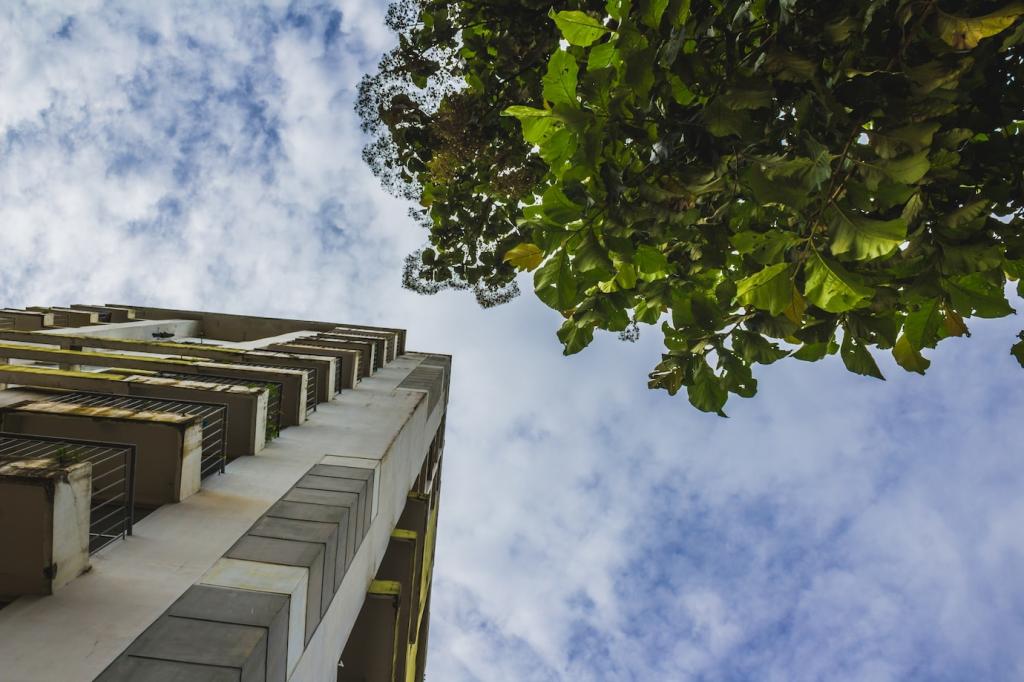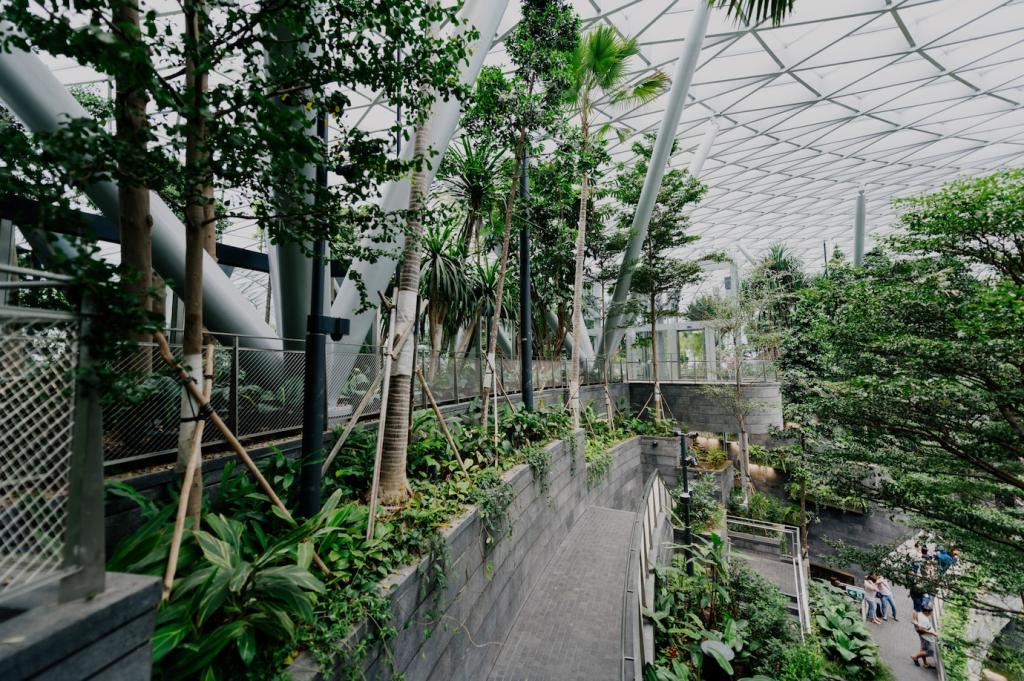Innovative Urban Green Space Designs
Innovative urban green space designs are reshaping the landscape of modern cities, fostering sustainable environments while enhancing the well-being of urban populations. As cities grow denser, the need for creative and multifunctional green solutions becomes critical, integrating nature meaningfully into the urban fabric. This page explores cutting-edge approaches to urban green spaces, showcasing ideas and implementations that transform city life, positively impact ecosystems, and create dynamic places for people to connect with nature.
Integrating Nature Within Urban Architecture
Vertical gardens have emerged as an ingenious solution to limited ground space in crowded cities. These living walls utilize building exteriors and interiors as a canvas for lush greenery, providing visual appeal alongside environmental benefits. Not only do they enhance the aesthetic of urban structures, but they also act as natural air filters, absorbing pollutants and regulating temperatures within and around buildings. Their presence helps create microclimates, boosts property values, and establishes a connection between residents and nature in places where open land is scarce.

Modern parks are designed to accommodate a broader range of activities and shifting community interests. Rather than dedicated zones for single uses, multi-use recreational landscapes support everything from sports and outdoor fitness to art installations and cultural events. Modular equipment, open lawns, and variable lighting enable parks to adapt throughout the day and year. This flexibility encourages inclusive participation and ensures that parks remain valuable assets for all segments of the population.

Previous
Next
Urban Agriculture and Edible Landscapes
01
Community Gardens in Residential Zones
Community gardens are a cornerstone of urban agriculture, fostering connection, education, and food security within city neighborhoods. By repurposing parcels of land for communal cultivation, residents gain valuable gardening skills and access to fresh produce. These shared spaces serve as informal gathering spots where neighbors collaborate across generations and backgrounds. Successful community gardens enhance local resilience, beautify streetscapes, and promote a sense of stewardship for the urban environment.
02
Productive Rooftop Farms
Rooftop farms are taking urban agriculture literally to new heights. By leveraging underused roof spaces, apartment buildings and commercial complexes can produce significant yields of fruits, vegetables, and herbs. These farms utilize advanced growing techniques such as hydroponics and lightweight soil systems, maximizing productivity while minimizing environmental impact. Beyond supplementing local food supplies, rooftop farms engage residents and visitors, offering hands-on educational opportunities and reconnecting city dwellers with the food they eat.
03
Edible Pollinator Pathways
Designing green spaces with edible plants that are also attractive to pollinators transforms ordinary city corridors into vibrant, multi-functional assets. Edible pollinator pathways combine fruit trees, flowering herbs, and berry bushes, supporting urban wildlife while offering harvest opportunities to local communities. These corridors enhance biodiversity, improve the resilience of local food systems, and provide a living classroom for urban ecological education. Edible pathways exemplify how thoughtful planting choices can multiply the value and impact of green space design.
Smart Technology in Green Space Management
Automated Irrigation and Water Sensing
Water efficiency is crucial for healthy urban landscapes, especially in regions prone to drought. Automated irrigation systems, guided by real-time soil moisture sensors, deliver precise amounts of water exactly when and where needed. These smart systems reduce waste, minimize maintenance costs, and ensure plant health throughout the year. By adopting water-sensing technology, urban green spaces set new standards for sustainability and resilience in city environments.
Intelligent Lighting for Safety and Ambiance
Lighting plays a critical role in making green spaces accessible and enjoyable after dark. Intelligent lighting systems use motion sensors and adaptive controls to illuminate pathways and gathering areas efficiently, reducing energy consumption while enhancing safety. These smart solutions can also be programmed to create dynamic lighting effects that highlight landscape features and foster a welcoming atmosphere. By prioritizing both function and mood, technology improves the usability and appeal of urban parks and gardens.
Environmental Sensors and Citizen Data
Environmental sensors deployed throughout urban green spaces collect valuable data on air quality, temperature fluctuations, soil health, and biodiversity. By making this information accessible to city managers and the public, these systems foster community engagement and informed decision-making. Citizen science initiatives further empower residents to contribute data and observations, creating a collaborative approach to urban ecosystem monitoring. The integration of sensor technology into green space management heralds a new era of data-driven urban ecology.
Green Spaces for Climate Resilience
Urban Forests for Cooling and Carbon Capture
Large-scale urban forestry projects are elevating the role of trees in city environments. Urban forests provide substantial cooling through shade and evapotranspiration, reducing the need for energy-intensive air conditioning. Trees sequester carbon dioxide, improving air quality and contributing to wider climate goals. Healthy urban forests also buffer wind, increase property values, and support diverse wildlife, making them core elements of climate-adaptive city planning.
Flood-Mitigation Landscapes
Flood-mitigation landscapes, such as bioswales and retention basins, are strategically incorporated into city planning to address more intense and frequent storm events. These green features absorb and filter runoff, protecting infrastructure and reducing the burden on conventional stormwater systems. Integrating flood-mitigation landscapes into public parks and open spaces helps cities adapt to changing precipitation patterns while enhancing recreational and ecological functions.
Drought-Tolerant Urban Gardens
In areas prone to water scarcity, drought-tolerant gardens use smart plant selection and design to create lush, thriving urban environments with minimal irrigation. Native grasses, succulents, and deep-rooted perennials are woven into attractive, low-maintenance landscapes across parks, medians, and public plazas. These gardens serve as living demonstrations of sustainable water use and inspire communities to embrace resilient planting strategies.
Garden Installations Reflecting Local Heritage
Garden installations inspired by local heritage capture the unique cultural flavor of a community. These spaces utilize native plants, materials, and aesthetic styles rooted in regional traditions. Interpretive signage, sculpture, and design motifs provide opportunities for education and storytelling. When green spaces embrace heritage, they foster a sense of place, deepen connections among residents, and preserve the distinct identity of neighborhoods.
Public Art and Sculptural Landscapes
The integration of public art with landscape architecture transforms parks and plazas into living galleries. Sculptures, murals, and interactive installations within green spaces invite exploration and contemplation, making art accessible to all. These artistic interventions can evoke social themes, highlight environmental messages, or simply delight with their creativity. By combining art and nature, sculptural landscapes become dynamic cultural destinations in the heart of the city.
Event Spaces for Festivals and Performances
Flexible green spaces are increasingly designed to function as venues for festivals, performances, and community gatherings. Lawns, amphitheaters, and open plazas offer inviting settings for cultural events that bring residents together in celebration. By hosting music, theater, and art festivals, parks enrich civic life and build lasting community bonds. Event-ready green spaces are adaptable, accommodating both large audiences and quiet moments of reflection, enhancing the visibility and vitality of public landscapes.
